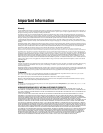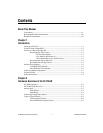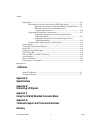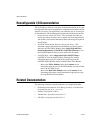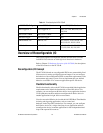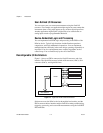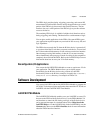
Chapter 1 Introduction
NI 783xR User Manual 1-2 ni.com
The NI 783xR uses the Real-Time System Integration (RTSI) bus to easily
synchronize several measurement functions to a common trigger or timing
event. The NI PCI-783xR accesses the RTSI bus through a RTSI cable
connected between devices. The NI PXI-783xR accesses the RTSI bus
through the PXI trigger lines implemented on the PXI backplane.
Refer to Appendix A, Specifications, for detailed NI 783xR specifications.
Using PXI with CompactPCI
Using PXI-compatible products with standard CompactPCI products is an
important feature provided by PXI Hardware Specification Revision 2.1
and PXI Software Specification Revision 2.1. If you use a PXI-compatible
plug-in card in a standard CompactPCI chassis, you cannot use
PXI-specific functions, but you still can use the basic plug-in card
functions. For example, the RTSI bus on the R Series device is available in
a PXI chassis but not in a CompactPCI chassis.
The CompactPCI specification permits vendors to develop sub-buses that
coexist with the basic PCI interface on the CompactPCI bus. Compatible
operation is not guaranteed between CompactPCI devices with different
sub-buses nor between CompactPCI devices with sub-buses and PXI.
The standard implementation for CompactPCI does not include these
sub-buses. The R Series device works in any standard CompactPCI chassis
adhering to the PICMG CompactPCI 2.0 R3.0 core specification.
PXI-specific features are implemented on the J2 connector of the
CompactPCI bus. Table 1-1 lists the J2 pins used by the NI 783xR. The
NI 783xR is compatible with any CompactPCI chassis with a sub-bus that
does not drive these lines. Even if the sub-bus is capable of driving these
lines, the R Series device is still compatible as long as those pins on the
sub-bus are disabled by default and are never enabled.
Caution Damage can result if the J2 lines are driven by the sub-bus.




